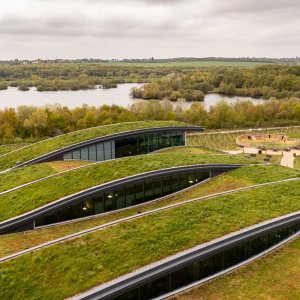Science-Based Targets in Cities

STORY INLINE POST
Geoffrey West, in his book Scale[1], states: "If you double the size of a city from 10,000 to 100,000 to 1,000,000, inhabitants, you systematically get 15% more creativity, innovation, wealth, police, wages, access to services, social activity, but also, crime, disease, rubbish … and you only need 75% infrastructure.” So, in all cities, there are sublinear and supralinear scales and at these different scales, the city must be sustainable: environmentally, economically, socially and institutionally. Talking about sustainability implies simultaneously using the tools that verify it. And without verification the risk of greenwashing is high. For a company to be branded as greenwashing is a high reputational risk. Companies have therefore opted to join science-based targets, (SBTs) where they publicly commit to meeting the targets they set themselves.
SBTs are emission reduction targets that are in line with the goals of the Paris Agreement, which aims to limit global warming to 1.5°C above pre-industrial levels. However, SBTs are not just for companies: they can also be applied to cities, which are responsible for a significant proportion of global greenhouse gas emissions.
Cities are responsible for approximately 70% of global energy-related carbon dioxide emissions. As such, they have a key role to play in achieving the goals of the Paris Agreement. The implementation of science-based targets can help cities reduce their greenhouse gas emissions and transition to a low-carbon economy. SBTs provide a clear and ambitious framework for cities to work within, helping to focus efforts and drive progress.
Cities should conduct a baseline inventory of their greenhouse gas emissions, identifying the sources of emissions and their contribution to the city's overall carbon footprint; set a target for reducing their emissions, based on scientific evidence and the latest climate projections; and develop a plan to achieve their target, outlining the actions they will take to reduce their greenhouse gas emissions.
The benefits of setting science-based targets for cities are numerous. First, SBTs provide cities with a clear and measurable goal to work toward, which helps to focus efforts and drive progress. By setting an ambitious target, cities can demonstrate their commitment to tackling climate change and promoting a sustainable future. This can help attract investment, create partnerships and foster innovation within the city.
In addition, setting science-based targets can help cities save money and reduce their environmental impact by improving energy efficiency and transitioning to renewable energy sources. Moreover, SBT´s can help promote sustainable transport options, reducing traffic congestion and air pollution in the city.
One example of a city setting science-based targets is Melbourne, Australia. In 2018, the city announced a target to reduce greenhouse gas emissions by 50% by 2030, compared to 2005 levels. This target was set in line with the goals of the Paris Agreement, and was informed by scientific data on the impacts of climate change on the city.
To achieve this target, Melbourne has developed a Climate Action Plan that includes a range of initiatives, such as increasing renewable energy use, improving public transport, and reducing waste. The city has also established partnerships with businesses and community organizations to support the implementation of these initiatives.
Another example is Vancouver, Canada. In 2015, Vancouver became the first city in the world to set science-based targets for reducing emissions. The city committed to reducing greenhouse gas emissions by 33% below 2007 levels by 2020, and by 80% below 2007 levels by 2050. These targets were based on the latest climate science and were consistent with the goals of the Paris Agreement. To achieve these targets, Vancouver has implemented a range of initiatives, including improving public transit, increasing cycling infrastructure, and requiring all new buildings to be carbon neutral by 2030. The city has also engaged with the community and businesses to increase awareness and support for climate action.
Despite the many advantages of setting science-based targets for cities, there are also some challenges to be taken into account. Among these is the need for political will and leadership. Setting and achieving ambitious targets requires the support of city leaders and a strong commitment to sustainability. In addition, implementing the necessary changes may require significant investment and may face resistance from stakeholders who are resistant to change. Another challenge is the need for data and expertise. Setting SBTs requires accurate data on greenhouse gas emissions and knowledge of the latest climate projections.
All these concepts come together in the adoption of complexity as a strategic element in the conceptualization and management of a city. As companies are the economic fabric of cities and are committed to sustainability, the city in its scale and territory must be consistent in order to have a strategy that is replicated at the country level to be internationally credible, and that beyond the signing of treaties there is an implementation of the actions defined in those treaties.
In conclusion, science-based targets are an important tool for cities to combat climate change and achieve carbon neutrality. By setting targets that are grounded in scientific data and consistent with the goals of the Paris Agreement, cities can reduce emissions, engage with their communities, and create more sustainable and resilient cities. Setting science-based targets is not only crucial for mitigating the effects of climate.
It is time to move beyond rhetoric and achieve tangible results, investing, enforcing regulations and with citizen and political leadership that transcends electoral and diplomatic issues.








 By Federico de Arteaga | Head of Project -
Mon, 06/05/2023 - 11:00
By Federico de Arteaga | Head of Project -
Mon, 06/05/2023 - 11:00
















